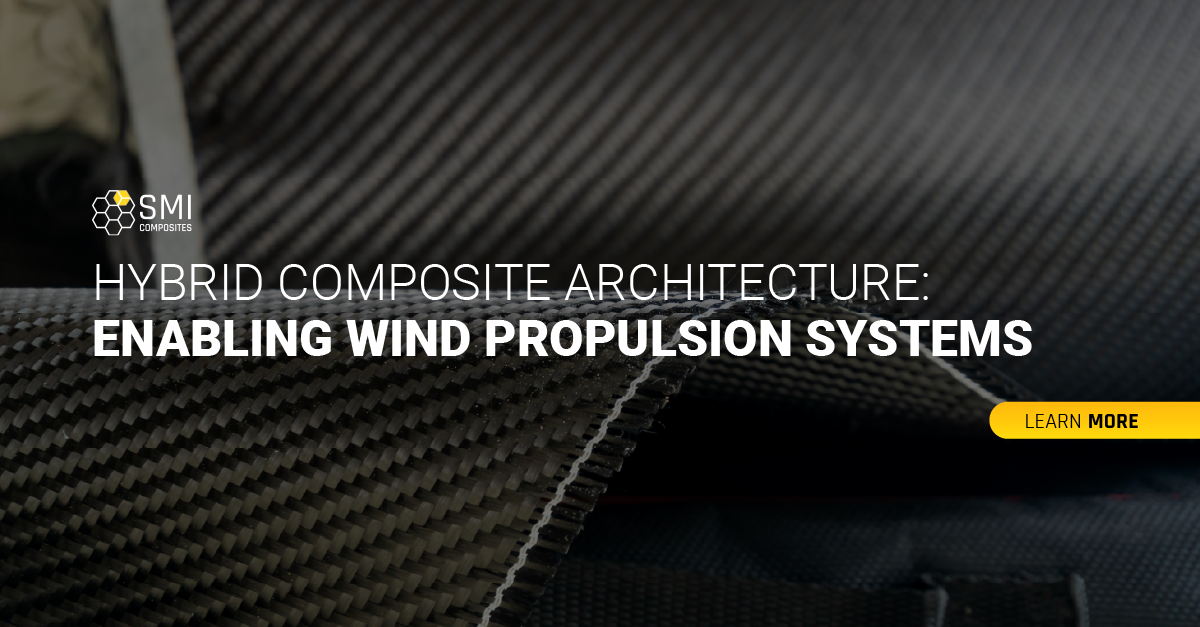
Did you know that maritime transport is responsible for about 3 percent of global greenhouse gas emissions? If the shipping industry were a country, it would rank as the world’s sixth-largest emitter. In response, innovations in hybrid composite architecture are charting a new course by enabling efficient, lightweight wind propulsion systems that provide a practical, low-carbon solution for greener shipping.
This article explores how hybrid composite structures are making wind propulsion systems more viable, improving fuel efficiency, and steering the maritime industry toward a more sustainable future.
Defining Hybrid Composite Architecture
Hybrid composite architecture refers to the innovative use of various composite materials to create structures that are both lightweight and strong. This combination not only improves performance but also offers exceptional resistance to harsh marine environments. By incorporating materials like carbon fiber and glass fiber into a unified architecture, manufacturers can produce vessels that are significantly more efficient and durable.
Benefits of Wind Propulsion Technology in Maritime
Wind propulsion systems are beginning to reshape the maritime industry by reducing reliance on fossil fuels and improving vessel performance. Their introduction marks an important step toward sustainability while offering shipowners practical cost advantages.
The main benefits include:
- Fuel efficiency that lowers operational costs
- Reduced greenhouse gas emissions across the fleet
- Better performance with less energy required
- Durability from composites that resist corrosion and wear
These advantages are encouraging shipbuilders to invest in new technologies that support international regulations and meet market demand for cleaner operations. By combining economic and environmental gains, wind propulsion is becoming a central part of maritime innovation.
How Hybrid Composites Enable Innovation
Hybrid composites are changing what is possible in wind propulsion systems. Their lightweight and adaptable nature supports designs that cannot be achieved with traditional materials, opening new opportunities for efficiency and performance.
Key contributions include:
- Improved vessel designs that maximize performance
- Tailored solutions adapted to the needs of ship operators
- Better fuel economy through lighter structures
As the maritime industry shifts toward sustainability, companies such as SMIC are taking the lead in developing and manufacturing these advanced materials. Their work shows how composites are essential to building stronger, more efficient, and more sustainable ships.
Looking to the Future With Sustainable Maritime Designs
As we look ahead, the potential for hybrid composite architecture in the maritime industry is vast. Enhanced performance, sustainability, and cost-effectiveness are becoming requisites for modern ship design. The move towards wind propulsion systems powered by composite materials is a significant step towards achieving a greener future in maritime travel.
Join the Revolution in Maritime Sustainability
Hybrid composite architecture is helping the maritime industry cut emissions, boost efficiency, and move toward a greener future. For shipbuilders, adopting this technology is both a sustainable choice and a competitive advantage.
At SMI, we combine quality-engineered parts, innovative design, and superior customer service with the flexibility of the Mayco Group. Our goal is to help customers bring their vision to life with advanced composite solutions. Request a quote today and be part of the future of sustainable shipping.
